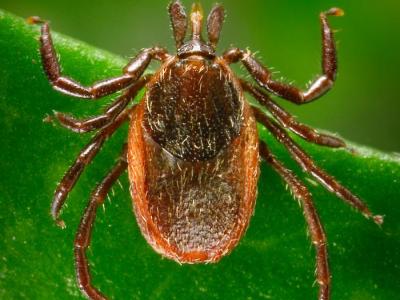PAHO: More cases in Brazil lead to another big jump in chikungunya
Brazil, reporting thousands of new chikungunya cases, almost single-handedly produced another big jump in cases in the Americas for the second straight week, the Pan American Health Organization (PAHO) reported late last week.
PAHO reported 9,522 new confirmed and suspected cases in its Apr 14 update, after logging 7,231 new cases the week before. The case count for 2017 has now reached 29,841, PAHO said.
Brazil, reporting just 2 weeks' of catch-up data, noted 9,329 new cases and 26,854 for the year, or 90% of the total. Brazil also reported another death, bringing its 2017 total to seven. No other country has reported chikungunya-related fatalities.
For the second week in a row Peru had the second-largest increase, but its numbers are minuscule compared with Brazil's. Peru noted 78 new infections and 489 total cases for 2017. Paraguay had 67 new cases and 739 total infections.
Many nations, however, have not reported on their chikungunya situation for weeks. Even Brazil is not up to date, as its data are current only through week 12 of the year, even though the PAHO report covers cases through week 15.
The chikungunya outbreak began in late 2013 on the Caribbean island of St. Martin and has now sickened at least 2,416,868 people.
Apr 14 PAHO update
Study: Premature infants at greater risk for pertussis
A new cohort study from data collected in Norway shows that premature infants (born at 37 weeks gestation age or less) were more at risk for contracting pertussis, or whopping cough, than full-term babies. The results were published in The Pediatric Infectious Disease Journal.
Using data from Norway's medical birth registry collected from 1998 through 2010, researchers identified 999 cases of pertussis in newborns. Premature infants were 1.65 times more likely to be diagnosed as having the bacterial infections compared with their full-term peers.
Infants born at gestational age 35 to 36, 32 to 34, and 23 to 27 weeks were 1.49, 1.63, and 4.49 more likely to have pertussis than full-term infants. In other words, there was a greater than fourfold increased risk of reported pertussis in infants born at less than 28 weeks compared with those born at 37 weeks gestational age or older. Preterm infants were twice as likely than full-term babies to be hospitalized for pertussis, as well.
"Importantly, the increased risk that we observed was not due to difference in vaccination status or socioeconomic factors among preterm and full-term infants," the authors write, noting that vaccination effectiveness and status was similar for both full-term and premature infants.
Apr 17 Pediatr Infect Dis J study
Meningococcal cases reduced with emergency vaccination program
A new report in Emerging Infectious Disease shows that a vaccination program aimed at protecting UK teenagers from group W meningococcal (MenW) disease reduced cases by 69%. The reduction in cases occurred despite only 36.6% of the study group having been fully vaccinated.
In 2015 and 2016, the United Kingdom and other countries in Europe experienced several outbreaks of MenW. According to the study authors, MenW cases in England increased overall by 15%, from 189 in the 2014-15 academic year to 218 in 2015-16, with a total of 6 deaths. Vaccine effectiveness was estimated among students who left school during the 2015-16 academic year. These students were targeted in a national vaccination campaign to promote vaccine coverage among this vulnerable population group.
"On the basis of population coverage of 36.6% among persons who left school, early estimated vaccine effectiveness was 100%," the authors wrote. "All case-patients who left school in 2015 and had confirmed MenW disease were not vaccinated; the only university case was in an overseas student who was not vaccinated."
Apr 14 Emerg Infect Dis study
CRISPR technology used to create highly sensitive diagnostic tool
SHERLOCK (Specific High-sensitivity Enzymatic Reporter unLOCKing) is a new technology revealed by collaborators at Harvard University and the Massachusetts Institute of Technology (MIT) that uses a CRISPR protein to target RNA instead of DNA. This makes it a highly sensitive and inexpensive diagnostic tool, with far-reaching implications for public health, the authors of a new study said.
SHERLOCK was able to detect Zika virus in serum, urine, and saliva at low titers and could identify specific bacterial pathogens. Researchers say the technology would be a useful tool in battling antimicrobial resistance, as it would help identify antibiotic-resistant strains of bacteria and aid in antibiotic prescribing. SHERLOCK can also detect genetic mutations in cancer cells and read human genetic information from saliva samples.
"We have shown that SHERLOCK is a versatile, robust method to detect RNA and DNA, suitable for rapid diagnoses including infectious disease applications and sensitive genotyping," the researchers wrote in their study, published in Science.
SHERLOCK is designed as a paper-based test that does not require refrigeration, which makes it suitable for use in field hospitals or in clinics with limited access to advanced laboratories.
Apr 13 Science study












